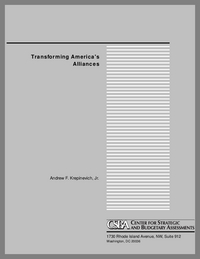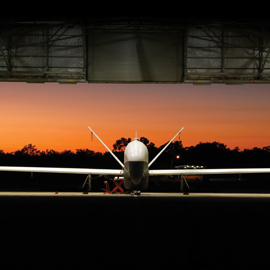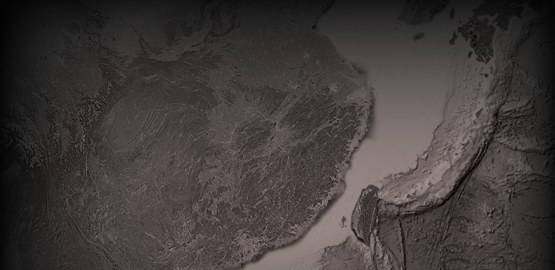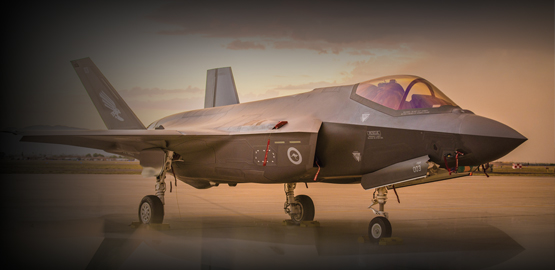
If the United States hopes to preserve its vital security interests at home and abroad beyond the near term, it will almost certainly find itself relying more on allies than it does at present. Equally important, it will rely on allies for substantially different kinds of military capability and basing support, and a different division of military missions than exists today. Several trends argue strongly for such a conclusion:
- The world does not appear to be evolving along the path to cooperative security, but rather, is reverting to more traditional great power politics. Put another way, we seem to be witnessing a reversal of the sharp decline in competition among the great powers that followed the Soviet Union’s collapse.
- The United States’ unipolar moment is already fading, and this trend will very likely continue. Over the next few decades, if economic trends persist, several great regional powers, to include China and India, will likely emerge. Russia is attempting to recover to great regional power status. With economic might comes military potential. Current regional powers, such as Germany and Japan, show signs of returning, over time, to less self-restrictive—and perhaps more independent—security postures. In short, the world will likely become increasingly multipolar in terms of power distribution, with Asia likely displacing Europe as the region of greater economic strength and military potential. As it does, the United States will have to rely more on its allies to maintain favorable military balances in key regions, and in key areas (e.g., space, the infosphere). At the same time, absent the overarching (and unifying) Soviet threat that characterized the Cold War era, America will find itself relying increasingly on “ad hoc coalitions” or “coalitions of the willing” to support its efforts at maintaining its global position. Put another way, allies are not likely to be as reliable as they once were, nor alliances as durable.
- To be sure, it is unlikely that any of these putative great regional powers will be able to match America’s military might directly. However, this may not be necessary to undermine the current favorable balances the United States enjoys in key regions around the world. There are several reasons for this:
- Great regional powers will be able to focus the bulk of their military effort within their region, optimizing their forces for operations in that environment. The United States, on the other hand, as a global power, must diffuse its military capability over multiple regions.
- Proliferation of weapons of mass destruction—nuclear, chemical and biological weapons—and missile technology, as well as uncertainty with respect to the security of America’s rapidly growing information infrastructure against information warfare, will likely demand an increasing share of US defense resources for homeland defense. All things being equal, this will leave relatively less military capability available for forward presence and power-projection operations, at the very time that great regional powers are on the rise.
- Great regional powers may ally themselves in a counter coalition that would dwarf not only the rogue state threats posed to the United States today, but even the challenge presented by Soviet Union during the Cold War.
- A military revolution now under way promises to change traditional (nonnuclear) warfare on a scale not seen since the period between the two world wars. Typically such revolutions produce a substantial decline in the value of certain defense systems. The United States, with by far the world’s largest inventory of military capital stock, stands to lose most from this phenomenon.
- Moreover, the military revolution will change the character of military competitions, and will likely present new challenges to the United States that will require its allies to shoulder a greater share of the defense burden. For example, US power-projection operations will become more difficult to execute as even second-rank military powers develop and deploy anti-access, or area/theater denial capabilities, putting fixed, forward bases (and perhaps maritime forces in the littoral) at high risk of destruction. Meeting this challenge to regional military balances will require the United States to transform both its power-projection forces and its global basing structure.
The emerging changes in the geopolitical and military-technical environments will lead America to seek different qualities in its relationships with its allies. A new division of labor will have to be arrived at that takes into account changes in: ally durability and reliability; the new missions brought on by the military revolution (e.g., precision strike, space control, strategic information warfare, ballistic and cruise missile defense, power-projection in the absence of fixed forward bases); and the likely shift in principal focus from Europe to Asia.
A number of blue-ribbon defense commissions—the National Defense Panel (NDP) and the Rumsfeld Commission among them—have identified these emerging challenges, both to the US homeland and to the ability of the future American military to project power overseas. However, the United States’ current defense program, as presented in the Defense Department’s Quadrennial Defense Review (QDR), does not provide the kind of strategic reappraisal of the future security environment that these emerging threats demand. Rather, the US military continues to place primary emphasis on prevailing in future Desert Storms, unlikely as they are, at the expense of transforming itself to conduct the military operations that will be key to future success.
In short, the long-term challenges facing the United States and its allies appear to be far more serious than those they confront today. As such, greater priority must be placed on transforming the US military so that it can effectively counter those future threats, even if doing so means accepting some marginal increase in risk over the near term. Conversely, if the US military is not transformed, it may lack the dominant military capabilities needed to attract and maintain critical allies 10-20 years from now, when the United States will most need them to defend its global security interests.
The preliminary assessment of future US security requirements, and the implications for alliance structures, undertaken in this paper is intended to serve as a point of departure for a more thorough assessment. However, this paper does offer some preliminary recommendations with respect to the future US alliance structure. The United States should accord high priority to:
- Maintaining its existing alliances with core great regional powers—NATO/EU (i.e., France, Germany, and Great Britain) and Japan. This will likely prove more difficult than during the Cold War, when America and its allies were bound tightly by an immediate, overarching threat.
- Cultivating relationships with the other likely rising or recovering great regional powers—China, India, and Russia—with the objective of avoiding the creation of a counter-US coalition, among some or all of these powers.
- Maintaining or cultivating relationships with key existing, and potentially rising, second-tier military powers, to include Australia, Israel, Korea, Turkey, and perhaps Singapore and Taiwan.
The United States should also effect a new division of labor for military missions between itself and its allies to better provide for both near- and long-term security. This division of labor should take into account potential changes in ally durability and reliability (i.e., the likely continuation of the shift from the rigid alliance structures that characterized the Cold War, to the ad hoc coalitions of today, to perhaps the migration toward new alliance structures tomorrow). To this end the United States should accord high priority to:
- Maintaining a dominant military capability in its core mission areas, both in the current (pre-transformation) and post-transformation periods. That is to say, the United States should avoid, if at all possible, arriving at a division of labor between itself and its allies that finds an ally having primary responsibility for a key mission area. Rather than having its allies occupy key niches, the United States should stress the layering of ally capabilities atop its own.
- Exploring the potential to reduce emphasis on transferring advanced military capabilities to allies in lieu of providing such support on a temporary, or loan, basis. Candidate capabilities would include the US global C4ISR, missile defense and high-fidelity training architectures, as well as advanced precision-strike munitions, both conventional and electronic.
- Enlisting allied support to enable the United States to free the resources needed to transform the US military. Such a transformation is necessary to ensure that US forces, working in conjunction with allied counterparts, will be capable of effectively countering the very different, and far more dangerous, military challenges likely to emerge over the long term (e.g., electronic defense, power-projection in an anti-access environment and space control). Along these lines, allies should be encouraged to assume a greater role in peacekeeping and urban control operations, and to provide ground forces for near-term regional conflicts. This need not involve a major increase in the level of resources allocated to defense by US allies. For example, South Korea should be capable of effectively defending itself without major US ground reinforcements.
- Reducing existing US force structure and slowing traditional modernization programs to ensure that sufficient resources are available to cover the costs of transformation. Again, these changes could increase the risk to US and allied security interests in the near term. But by comparison with the Cold War and the kinds of threats likely to emerge over the long term, the risk incurred is likely to be quite modest.
- Supporting the efforts of selected allies to develop advanced military capabilities. For example, assistance might be provided to enable Australia, Israel, Japan, NATO Europe, and the Republic of Korea to develop their own anti-access forces, to include missile defense capabilities. Great Britain might be supported in its efforts to create power-projection forces that can operate effectively against anti-access forces and, along with Australia and Japan, to create forces to frustrate multi-dimensional (i.e., land-, space- and sea-based) maritime commerce raiding and blockade.
- Migrating toward a new global basing architecture as a means of: hedging against the likelihood that future alliance relationships will be less predictable than they have been over the past 50 years; countering the growing risks involved with traditional reliance on fixed, forward facilities; and recognizing that Asia, rather than Europe, will likely be the region where US security interests are at greatest risk. Existing or prospective allies whose value as providers of forward basing facilities may increase substantially include Australia, Russia, and Turkey.
In summary, if the United States is to preserve the current favorable military balance in regions around the globe in the future, it will find itself increasingly dependent upon allies for support. This may require a somewhat different set of alliances than exists today. However, it will almost certainly require a very different division of labor. Restructuring alliance relationships to meet these requirements will take years, perhaps a decade or more, to accomplish. Yet the geopolitical and military revolutions that will likely stress US alliance relationships and key regional military balances are already well under way. Hence it is no exaggeration to say that a strategic assessment of America’s alliance relationships should be undertaken now, while the opportunity to shape the future is at its greatest.



























